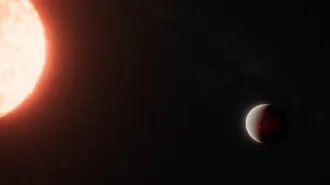Cosmic lens exposes spin of supermassive black hole

The light coming from matter falling into a black hole 6 billion light-years away was magnified and split into four images by a large galaxy that sits much closer to Earth. This composite image shows the four bright spots (purple) in a ring that gave away the black hole's existence and ultimately its spin.
X-ray: CXC/NASA; Optical: STScI/NASA







